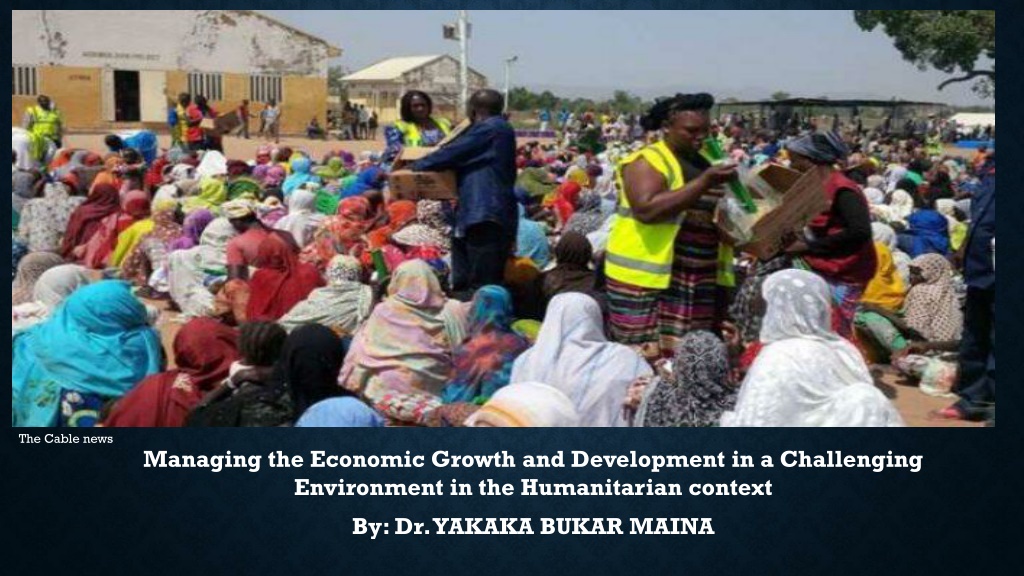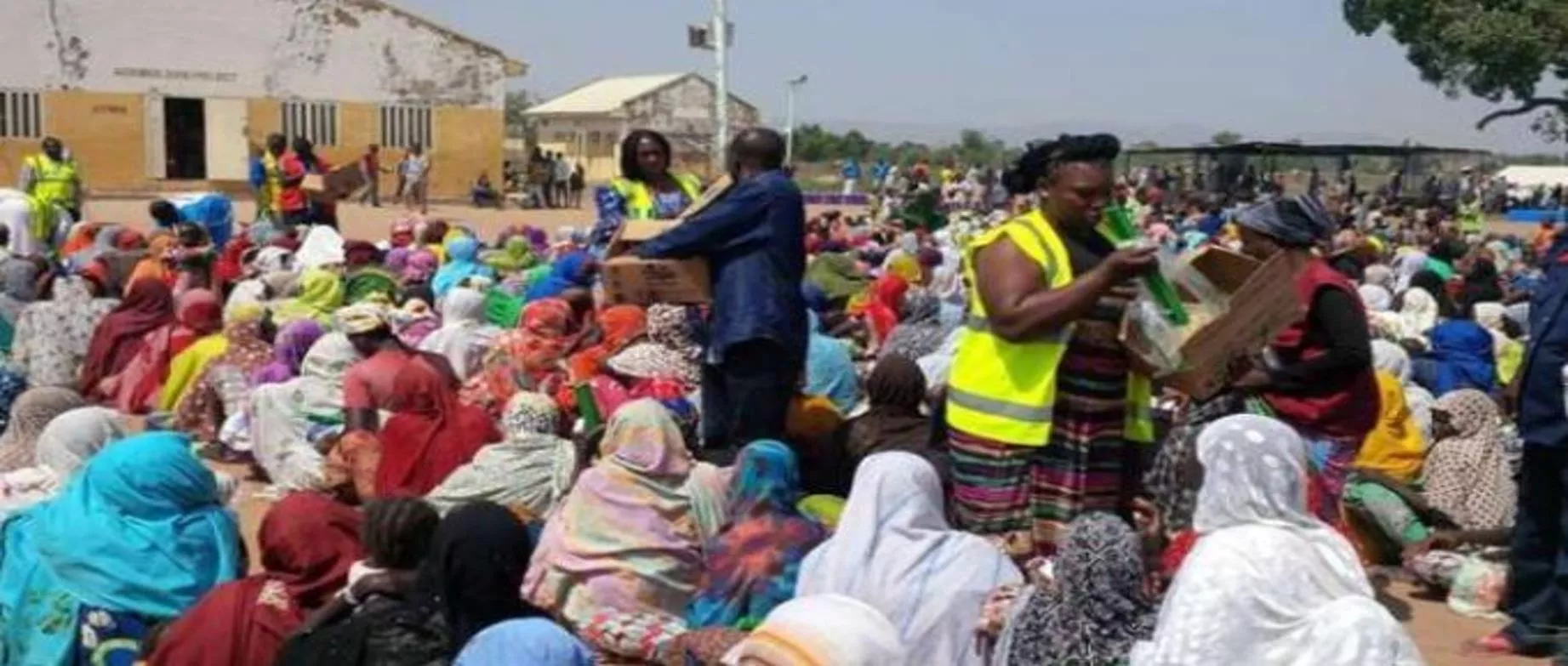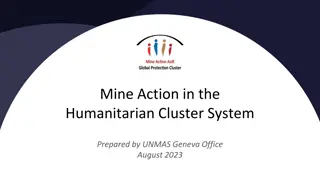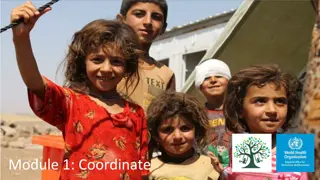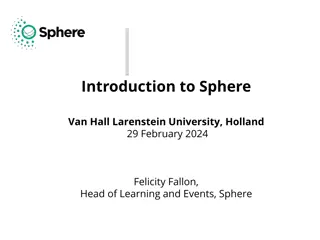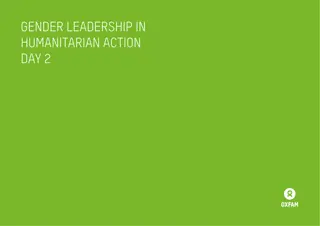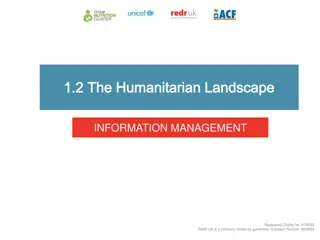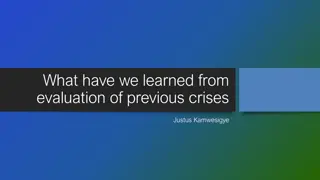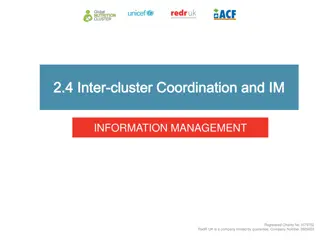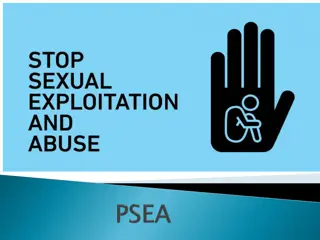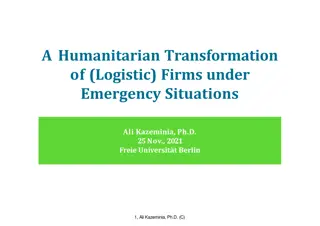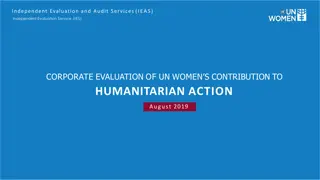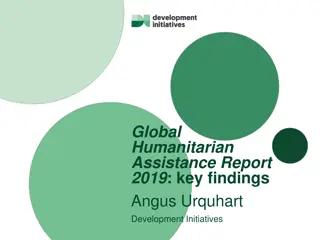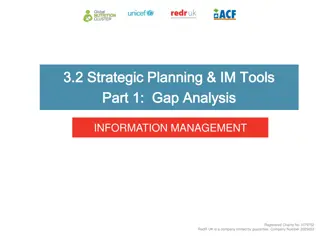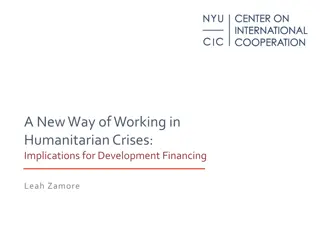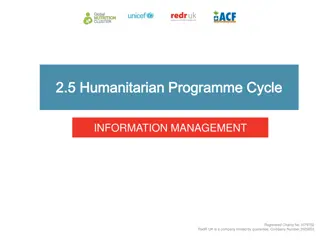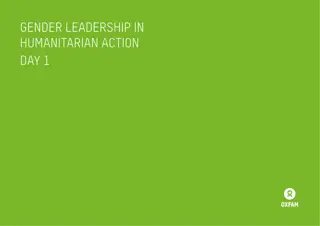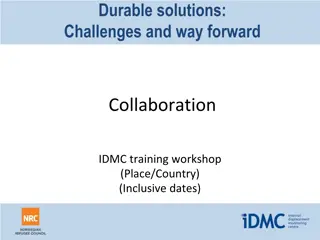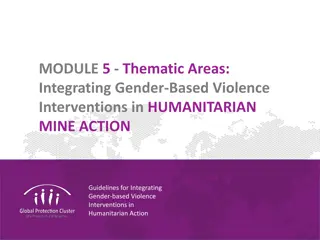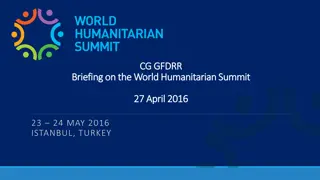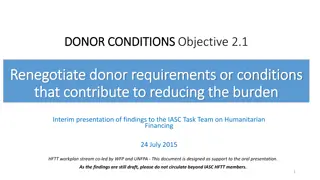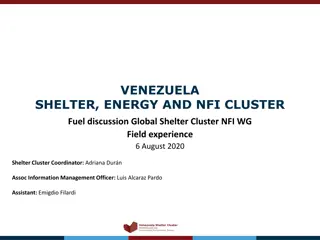Managing Economic Growth in Humanitarian Context: Challenges and Solutions
Nigeria faces a multitude of social challenges such as Boko Haram insurgency, banditry, and kidnapping, affecting millions of people. This paper examines the humanitarian interventions in health, education, protection, and livelihood amidst these adversities. Issues like hygiene, reproductive health, education neglect, and lack of skills programs for adolescents in camps are discussed, highlighting the need for innovative solutions to drive economic growth and development in such challenging environments.
Download Presentation

Please find below an Image/Link to download the presentation.
The content on the website is provided AS IS for your information and personal use only. It may not be sold, licensed, or shared on other websites without obtaining consent from the author. Download presentation by click this link. If you encounter any issues during the download, it is possible that the publisher has removed the file from their server.
E N D
Presentation Transcript
The Cable news Managing the Economic Growth and Development in a Challenging Environment in the Humanitarian context By: Dr. YAKAKA BUKAR MAINA
INTRODUCTION Nigeria as a nation is affected by range of multifaceted social problems to mention a few are the Boko haram insurgency, banditry, kidnapping and IPOB agitation. All these social adversities have affected one zone or the other. However, Boko Haram insurgency remains a huge security challenge. According to a report by United Nations Refugee Agency (2021) this twelve-year conflict and humanitarian crisis has displaced over 3.2 million people with over 2.9 million internally displaced persons (IDPs) in north-eastern Nigeria, over 684,000 IDPs in Cameroon, Chad and Niger and 304,000 refugees in the four countries. The humanitarian response and support system have specific target groups they aim to assist, these are Internally displaced people, Persons with disability, Children under 5 years, Single heads of households and Host communities. To a large extent the strategies implored by the humanitarian actors have yielded positive result as well as suffered some shortfalls. Hence this paper tends to look at these shortfalls in humanitarian services in the context of Health, Education, Protection and livelihood with a view to managing these challenges towards achieving economic growth and development. Therefore, the objectives of the paper are to examine the challenges of the humanitarian interventions and to proffer ways forward. The Next Edition
Humanitarian: Health Challenges on Economic Growth and Development The recent pandemic of Covid-19 has impeded the responses of health actors, thus necessitating new approach toward providing interventions in area of Infectious diseases such as Covid-19, Malaria etc. Hygiene which includes food, toilets and environment. Reproductive health interventions Hygiene level tends to depreciate especially among households due to overcrowded camp. Toilet hygiene is a matter of concern among the growing population in the camp most especially among Children Toilets being used without washing hands then going off to eat food and play with their peers. The rains are here the surroundings are once again green with bushes and stagnant waters, mosquitoes will thrive. Reproductive health issue among adolescent, most especially the girl child experiencing menarche. Sex education among male and female gender (family planning & STI). Rape management and channels of treatment are not sufficient. Drug abuse The Guardian News
Humanitarian: Educational Challenges on Economic Growth and Development With ever increasing population of the world s out-of-school children and adolescents living in the conflict-affected countries, education should be a priority in humanitarian services delivery in order to achieve economic growth and development. A report by UNESCO in 2015 shows that the humanitarian aid systems have neglected the education of children and adolescents in countries affected by or emerging from conflict where more and better targeted aid is needed. The humanitarian aid givers in Borno are not left out in this context of giving less priority to children s education Public Health International Kids within the age group of 3 to 10 years roaming around The age brackets of 10 to 18 years are now the new vendors in town and this further exposes the already traumatized children to psychological mismatch. Required skills acquisition program that focuses more on career development and entrepreneurship is Lacking among adolescent in the camps The teachers lack the teaching strategies ( On Subject matter and The Nature of the Learners).
Humanitarian: Protection Challenges on Economic Growth and Development Protection encompasses all activities aimed at ensuring full respect for the rights of the individual in accordance with human rights law, international humanitarian law (which applies in situations of armed conflict) and refugee law. In situations of armed conflict, all parties to the conflict, i.e. States and organized armed groups, must respect and protect civilians (OCHA, 2012). The conflict do not spare the civilian population from the effects of hostilities. Hence, failure to do so usually results in death and injury of civilians targeted or aid givers who get caught in the attacks. Increased risk to other violations which include sexual violence and Forced recruitment; physical and mental suffering; and potentially chronic dependency on humanitarian aids.
Humanitarian: Livelihood Challenges on Economic Growth and Development The activities of Boko haram have affected the livelihood of so many communities within and across the state. The most affected are farmers, this is because the major livelihood activities of the rural communities are farming, fishing and animal husbandry. The situation has been enormous such that it has caused severe food shortages due to resource constraints and consequently rise in the prices of food and non-food items Climate change has further widened the challenges faced by these communities affected by Boko haram which includes food insecurity, drought and flood. Resource competition in areas such as the Lake Chad Basin, whereby the water is receding, fish stocks are reducing by the year, cultivatable land are disappearing, and other economic opportunities are also diminishing. Energy crises, most people affected are resource poor as a result they rely so much on the primitive or dirty fuels (Biomass). UNICEF
Way Forward for Humanitarian Services Deliveries Health Interventions: Government and NGOs should give more emphasis to preventive than curative medicine. Hygiene improvement in the areas of cooking food, drinking water, habitable environment and latrines. Research in public health that will look into communicable and infectious diseases as well as achieving the zero malaria status. Education Intervention: Educational curriculum should be strictly adhere to as well as incorporate the Nigerian government syllabus up with the changing situations. Skills acquisition aspect, there should be identification of underutilized resources such as using hides and skin which can used in production of shoes, bags, belts etc. Factories should be revived and such skills be taught to the conflict affected households/person thereby creating jobs opportunities and consequently economic growth and development. Protection Intervention: Government and Humanitarian actors should use strategies in ensuring that all parties to conflict respect protection laws and the rights of civilians. This can be done by using their intervention aids as a campaign for civil rights by inscribing caption such as Don t kill children and women.
Livelihood Alternatives: Government and NGOs should invest on core households activities that generate income; such as farming, animal husbandry, fishing and handicraft. Home Agriculture: A solution to the impact of climate change to improve food security and livelihood, home garden should be encouraged Housing Intervention: There should be a synergy between government and NGOs, such that the government provides land areas close to the state and Local Government Areas that are secured, then together with the NGOs should build houses for the resettlement of the IDPs. Smart Agriculture: With a view to adapt to the changing climate, to reduce the emission of Greenhouse Gases (GHG) through agricultural activities and improve agricultural production and profit of the conflict affected households Briquette Production:To solve the energy crises among the vulnerable communities, government and NGOs should teach the affected persons how to produce briquette which could be done with various sources of raw materials
Humanitarian Strategies Synergy:There should be synergy amongst such NGOs in order to effectively and efficiently achieve their aims thereby covering wider areas and reaching out to more vulnerable persons with the time frame anticipated Sensitization: There is the need for proper communication channels to be established between the NGOs and the stakeholders involved Vulnerability Identification: There should be proper identification of vulnerable persons. Bio-metric Update: There should be proper documentation and re-documentation of vulnerable persons Prioritizing Interventions: There is also the need to be specific when it comes to the type of intervention to be given based on location, gender and age Corruption: There is the need to put proper machinery in place to fight the corruption that militate the efficient distribution of aids. The bureaucracy that exists in the system whereby the Bulamas and the Lawans hijack intervention materials and share only to their families and friends while leaving out the vulnerable ones should be checkmate
Thank You Thank You
